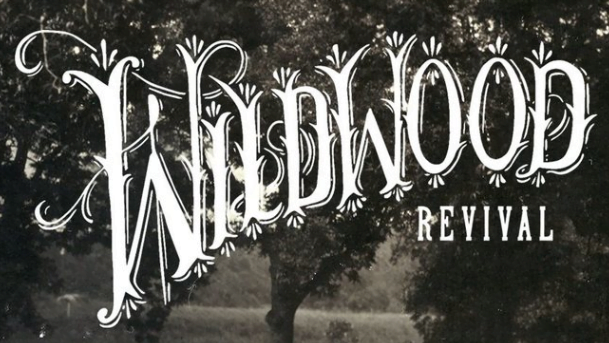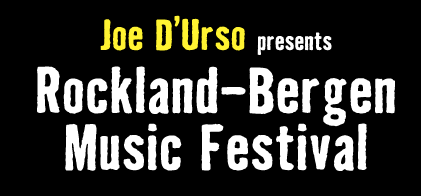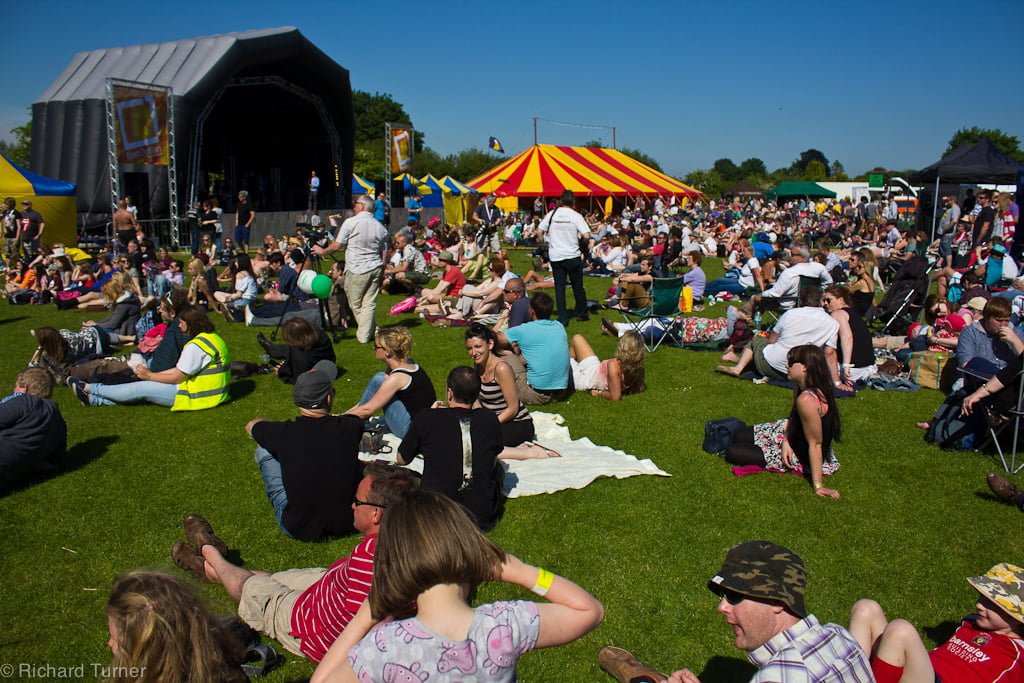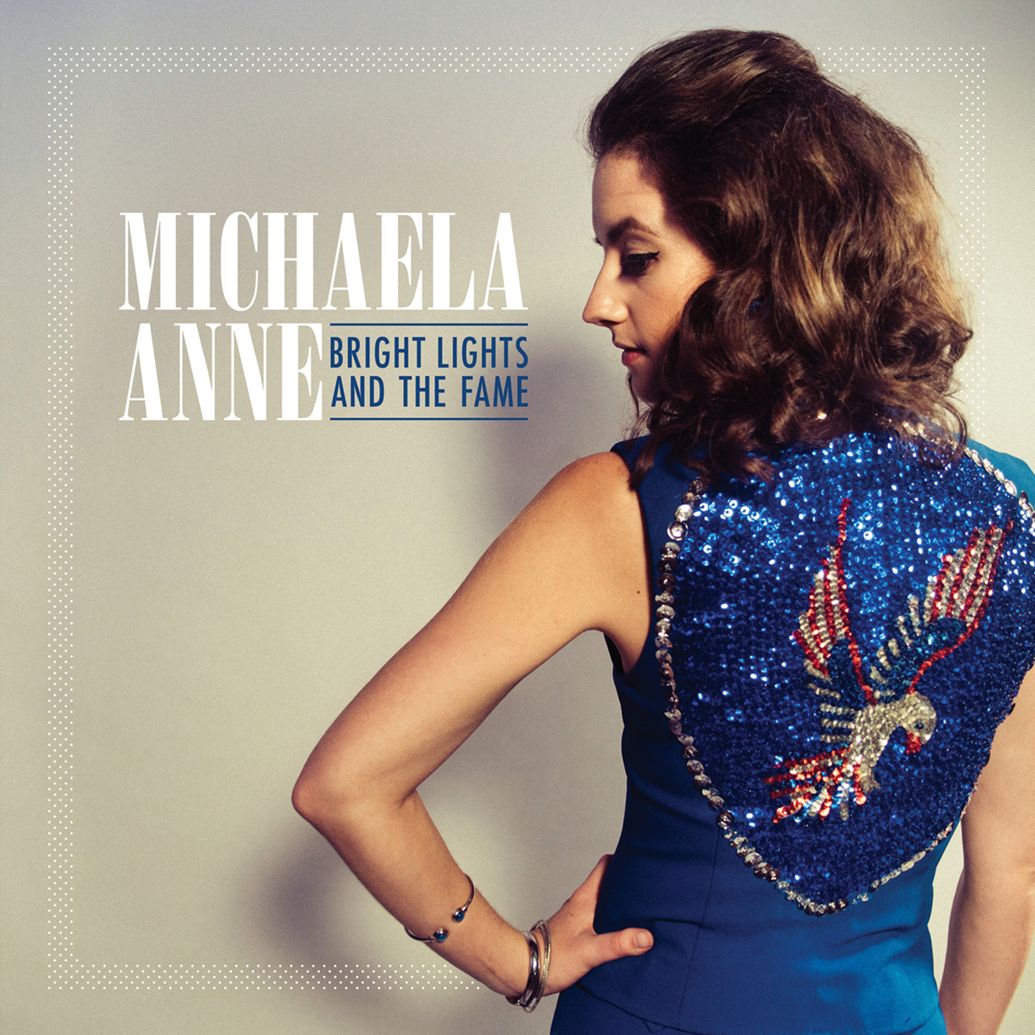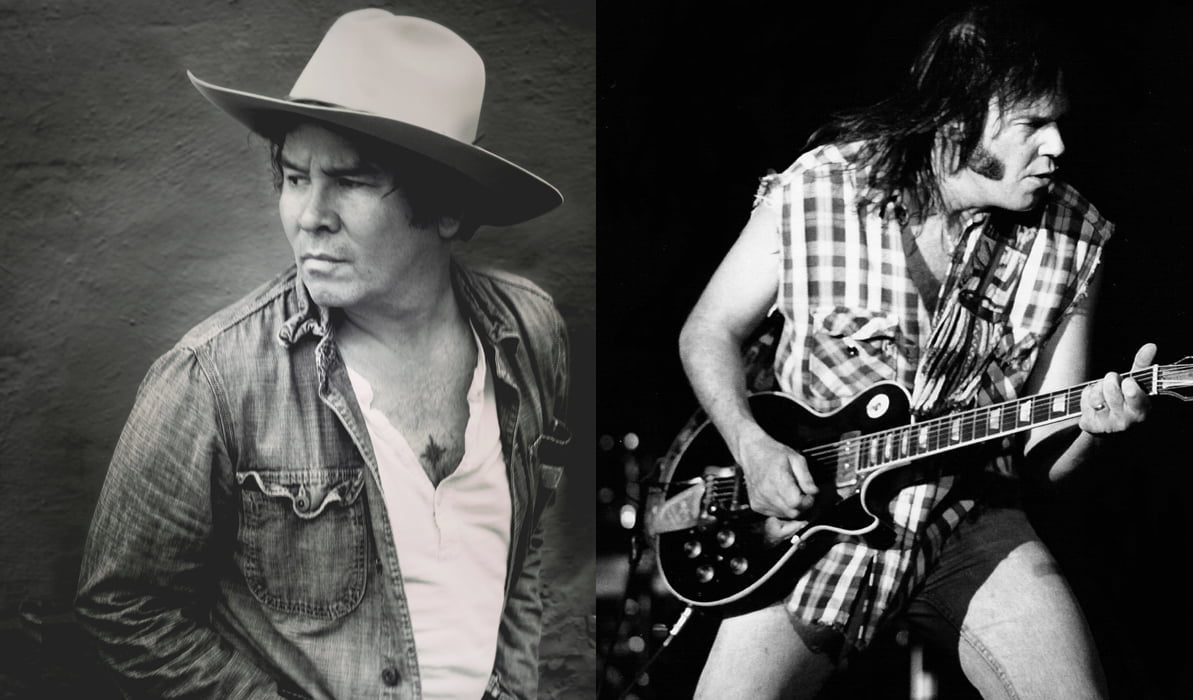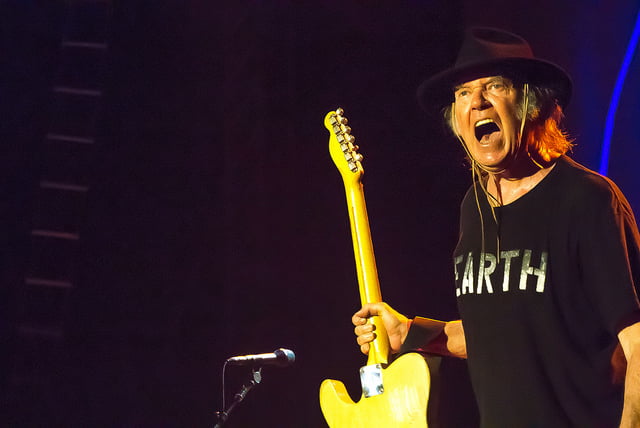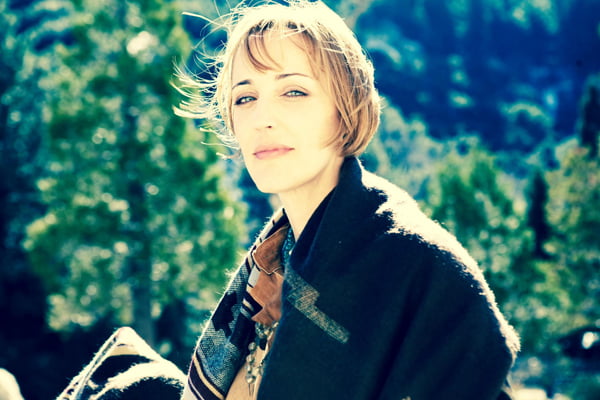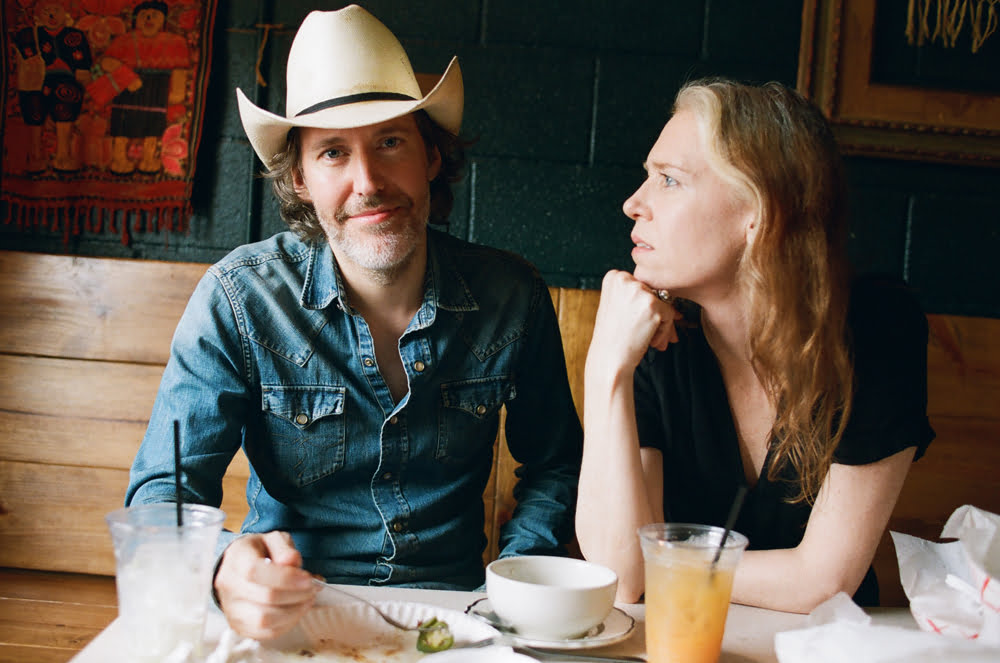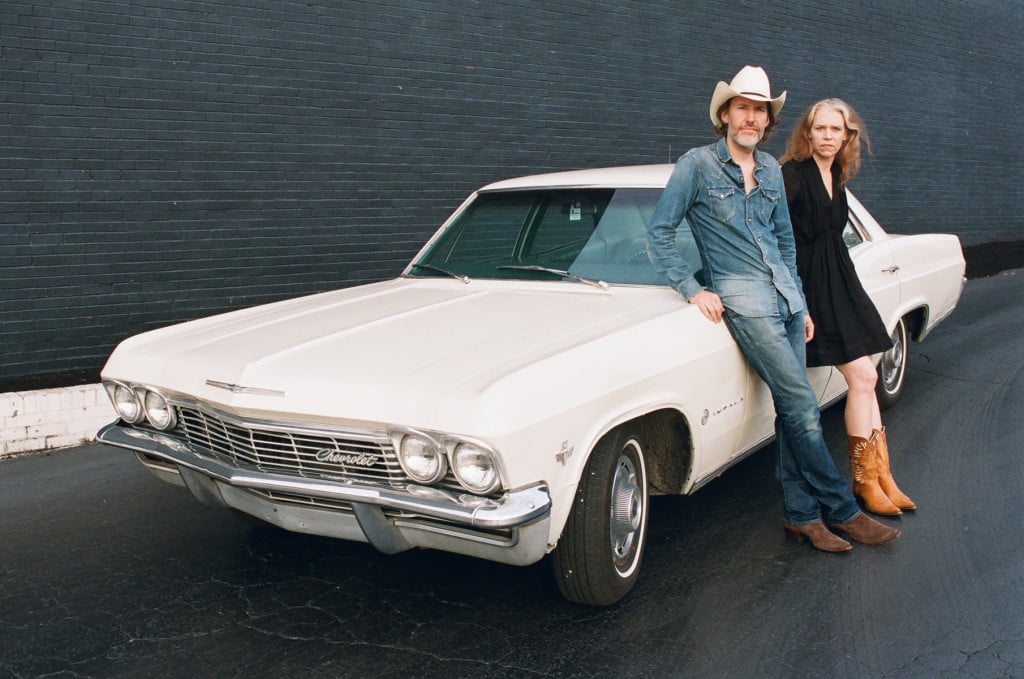Sporting scuffed boots, old jeans, and a battered cowboy hat, Dave Rawlings is standing in the country music section of Landlocked Music in Bloomington, IN, right beneath a poster that he and Gillian Welch signed several years ago. They have just played to a packed house at the Bluebird up the street, and we have stopped by the record store because it’s the only quiet place on the block. (Full disclosure: I work part-time at Landlocked, which is how we got in.)
Rawlings tries to concentrate on the interview and talk about Nashville Obsolete, the weird, wild, haunted second record under his Dave Rawlings Machine stage name. A self-professed record nerd, he looks like he’d rather be digging through crates than talking to a journalist. Who wouldn’t? Occasionally he gets distracted by a poster on the wall or an outfacing record in the bins, such as a new copy of Miles Davis’s Kind of Blue …
Dave Rawlings: I’ve had a really nice, off-brand copy of that record that came out at the same time as the Fontana version. It actually sounds better than any of the later ones I’ve heard, better than all the 180 gram stuff, which all sounds like shit to me. That old Fontana sounded really good, and then I got the Six Eye, which sounds nice. I don’t buy a whole lot of high-end records, but that was one of them.
I had to make a hard-and-fast rule that I wouldn’t buy any record that I wouldn’t play.
Oh, I play them. The only one I haven’t played, one I found on the cheap somewhere, a triple record, Europe ’72, the Dead record. I found an unopened first pressing, and I never opened it.
How can you even bring yourself to break the seal on something like that?
I just got an amazing first London pressing of the first Stones record, which I’m real fond of. It’s so much better sounding than any other version of it I’ve ever heard. There are two other songs on it, but the fidelity level — I just can’t believe how much better it sounds. So I just play it. Who cares? It’s a $100 record, but there are other ones out there. If I play this one to death, then all the other ones will be worth $105. It’s like when I got my guitar, it didn’t have a bridge on it. So I put a bridge on it. Up until that point I played a Taylor and we used a pick-up. I was like, "Am I going to be the asshole who puts a pick-up in this guitar?" It’s from 1935. No fucking way!
I could talk records all day, but the main record I want to talk about is Nashville Obsolete. Do you sit down and think, "Okay, now I’m going to write a Dave Rawlings Machine album?" Is it a different process than writing a Gillian Welch album?
When you’re trying to re-create something in your mind, you always do it wrong. The way I remember it may not actually be the truth. Gill and I put out The Harrow & the Harvest back in 2011, and it was our first record in so long. So we ended up doing a lot of touring for that. We were on the road for 18 months … two years … pretty much straight, and when that ended, we had some ideas germinating. We weren’t really much on a page, so it wasn’t like we decided to make another Machine record. We were just working on songs. We got one or two of the songs to a place where we thought they were close to finished, and we decided they were going to be Machine songs.
This would have been around the time of Another Day Another Time — the concert for Inside Llewyn Davis, right?
The Coen Brothers called us up and asked if we would come and be part of that concert, even though we hadn’t worked on the music for the film. T Bone [Burnett, who produced the concert and the Llewyn soundtrack] got in touch with us, so we agreed to go up and play. We had some of the Punch Brothers play with us on “Will the Circle Be Unbroken,” which was the first or second song. That was the first time I had played with Paul Kowert, who plays bass on the Machine record. I thought he sounded good with us. And then Willie Watson was on the show, too. I produced a record for him, and I don’t know if it was out yet or not. I’m not sure where that was in the timeline. But Willie was playing with us, so we just needed to find a fifth. So I called John Paul Jones because he had come in on the first Machine tour. He had called us up quite out of the blue when we were in the UK and said, [adopting exaggerated English accent] "Fancy some mandolin?" Of course! Those had been really fun shows with JPJ, and so it crossed my mind that I should at least call him up and give him right of first refusal. He was working on an opera, which is an enormous undertaking. The most expensive work of man, after war, is opera, they say. So he was too busy for this couple-week run we were putting together, but he called us back the next day and said it sounded like fun. We did three runs.
Was it a different crowd than you had for the first Machine tours?
I was pretty shocked. Compared to the touring for the first record, the audience for those more recent shows was double what it had been. And we hadn’t done anything! So that helped get us working on other songs. But the stuff didn’t seem particularly commercial. I thought it was some pretty strange stuff, but I actually had a conversation with Joel Coen. I told him I didn’t think we should throw it away, but I didn’t know what to do with these new songs. He told me that when he and his brother have projects like that, they just do it. If they like, they do it. So that gave me a little perspective. Suddenly I knew where we were going.
We kept working on the stuff in the studio, and then I took some time to do the Dawes record. That happened in November of last year, something about working on that record, and then mastering it, all of a sudden some of the songs started to coalesce. So we listened to the stuff we had recorded, threw it all out, and started fresh. It was strange — the more we worked on this stuff, the more it started to feel like something people might actually like! I guess it was working on other people’s songs that made our songs coalesce. But I feel like we got to a different place with the writing. We tend to write every which way. Sometimes I’ll start something. Sometimes Gill will start something. And we work on them together. The ideas come from different sources, but it’s interesting that there ends up being a real thread that runs through them.
It definitely sounds like a cohesive album, not just musically but thematically.
I tend to think — at least in our world as writers — you tend to move through ideas, but you don’t move through them that fast. You tend to ruminate on things for a year or 18 months, and then you move on to something else. That’s good for a certain kind of cohesion. I always think about the stereotypical album where someone goes out in the woods and writes for two weeks — those tend to be farther afield because it’s like, "I need another song. Let me just write one, even if it isn’t connected to me right now." Which I find funny.
Exactly. You can end up grasping for straws to fill space. But these songs do sound very different than the ones on the Gillian Welch albums. They’re a little looser and free-floating, where maybe you don’t have a verse-chorus-verse structure.
The weirdest thing about trying to discuss any kind of music is, I’m enough of an analytical person that I can analyze anything, but that has very little do with the creation of art. I can always reverse-look at something and reverse-engineer it, but that’s Monday morning quarterbacking. It’s always looking back and trying to make an assumption. Strangely, I agree with you. From a structural standpoint, these songs tend to have three sections. Rather than being verse-chorus songs, they have a verse and then a pre-chorus and then a chorus. That’s probably why a lot of them are so damn long! Something like “The Trip” is free-flowing because it’s so long. There are verses and choruses, but we just didn’t put a chorus after every single verse, because it would have been 25 minutes long! We tried to mix it up.
I can’t even begin to tell you why we were writing in that form. If you look at the words on the page for Dylan’s John Wesley Harding, the songs are virtually in the same scansion. They’re all more or less the same number of words. They’re all three verses, and none of them have choruses. The title is generally in the first line of the song. They’re as formulaic as they could possibly be, and that’s just where his head must have been. For whatever reason our heads must have been in this kind of shape.

Tell me about the strings on this album. Especially on those first two songs, the strings sound incredibly prominent, more so than on your previous songs.
I never wrote strings before. On the first record, we had worked with a really talented guy named Jimmie Haskell, who was a dream to work with. It was a wonderful collaboration. We ended up changing a lot of stuff on the fly, and he said he hadn’t done a session like that in years. But he’s in his late 70s now and I think he’s fully retired. We tried to get in touch with him, but we never even heard back. I don’t know who else we had in mind, but time became an issue. Matt Andrews, the engineer we’ve worked with going back to Hell Among the Yearlings, had a deadline where he was leaving the country for a while, so we only had a short amount of time. If we didn’t get it out, it was going to be months and months. I like working on stuff with Matt, and I didn’t want to have somebody else come in and finish the record. So we realized we had maybe six or seven days. That was it!
He had recently gone down to Memphis and recorded at Royal, which is Willie Mitchell’s place. They had an opening on Monday, and on the Wednesday night before, he brings over this software that lets you mock stuff up. So, Thursday morning, I sit down in my chair to get started. I’ve arranged certain kinds of guitar my whole life, but I’ve never arranged strings. I know literally nothing about it. I wrote a lot of terrible-sounding crap. It’s awful. On Friday, I wrote some more crap. Sometime on Friday, I start writing some stuff that isn’t so terrible. I wrote a lot of stuff and, when I listen to it again, it’s okay but overwritten like crazy. So I spent Saturday cutting it down to what exists now, and I’m pretty happy with it. This is going to be okay. Mind you, I’m just hearing the software. I still hadn’t heard a live string player play any of it. I don’t know how we’re going to get the charts made, and I don’t know how we’re going to conduct any of it.
So that was one song. I started working on “Short Haired Woman Blues,” and same thing: rubbish, rubbish, rubbish. Finally, I came up with one little thing that I liked, and I started building outwards from there. It’s still overwritten, but I didn’t have a chance to edit it. I was just, "Okay. Whatever. Fuck it." I didn’t sleep on Saturday or Sunday. I just stayed straight up writing those charts. I finally get it to a point where it’s reasonably done. We’re supposed to leave for Memphis at 9 am Monday morning, and it’s 8:45 and we’re trying to load up the tapes. We send it of to somebody to put in bowing marks, and then they hotspot that stuff back to us in the car. Matt brought a printer with us so we could print out parts on the way. In the end, though, I like those string arrangements. I’m glad Matt made the decision to go to Memphis and do them in that room because they have that dry Memphis sound, like those old Al Green records. It was frantic, but really fun in a way. So cool — I can arrange strings now!
Next stop is an opera.
No, please! That’s way too much for me. But strings are such beautiful instruments. You can make them do things that you can’t play, and you can’t always have voices do those things. When you listen to some of that old orchestra stuff — or old Sinatra records, things like that — there’s a lot of flexibility there, some beautiful color. It’s a lost art. Now people use them as a reference a lot of the time, or as a cliché, instead of just music. There’s enough history now that we’re into this strangely referential phase.
Is that where the album title comes in? It’s an interesting phrase and seems topical to what’s going on with country music right now.
The title was a phrase that would come up all the time, and we would laugh about it. In our world, we were working in an old studio. Recording studios have been made more or less obsolete by the economic necessities of music being value. And we’re working on tape, which is an obsolete format. We’re working with obsolete microphones, obsolete consoles, old arch-top guitars. So there was a certain aspect to it that just seemed appropriate. It tied everything together for me. And our connection to Nashville has deepened over the past few years, and I don’t know why that is. The city has changed and grown so much in the last five years. I was just out a little ways somewhere where you could see the skyline, and there were 12 of those gigantic cranes building city blocks, building skyscrapers. And that’s been going on for five, six, seven years. The boom just won’t end.
And so much of what was there is now gone. We used two photographs in the album packaging that this guy Hank DeVito took. He was a steel player who played with Emmy [Emmylou Harris] for a while, and he wrote that song “Queen of Hearts.” We’ve known him for a while, and he had a show at the Tennessee State Museum of photographs he’d taken in Nashville around ‘81 or ’82 — all the old, hand-painted signs and stuff that were still hanging on back then. So it’s basically signs from the ‘10s all the way up to the ‘60s that he thought were cool, and he snapped pictures of them all. Sometimes photographs become more important as time passes, because a lot of that stuff was obliterated in the last boom, when we moved there in the early ‘90s. But this wave is five times bigger than that wave was, and it’s just clearing out the town.
The town strikes me as recession proof. It’s a zombie eating brains.
Nashville is amazingly resilient. And music has never really been the biggest industry. I think it’s sixth or something — not as high up as you would think. There’s insurance, publishing. But I think the city has a great quality of life. The food’s started getting good, and East Nashville, where we’re at, is a great walking neighborhood. That’s why people are drawn there. You can get around without having to get in your car.
I have to ask, given the setting, when are we going to get vinyl editions of the Gillian records?
I’m in the middle of that process. We’ve always been committed to not wanting to make vinyl off the digital parts. Our records are very spare, and because of that, the soundscapes are a lot of what make them what they are. So I’ve never been excited about remastering them. Going to another master and coming up with a different picture — to me that would make it a very different record. We’ve been going down a very long path of getting a very high-quality lathe into our mastering engineer’s facility, and we’re close to being done with that. Then we’ll start knocking them out. Again, 100 percent obsolete. Maybe somebody’s making a new lathe in the near future, but I don’t think a professional lathe has been made since the ‘80s. The thing that’s so stupid is that vinyl is so important to us that we’ve never done it.
Photo credit: Henry Diltz


